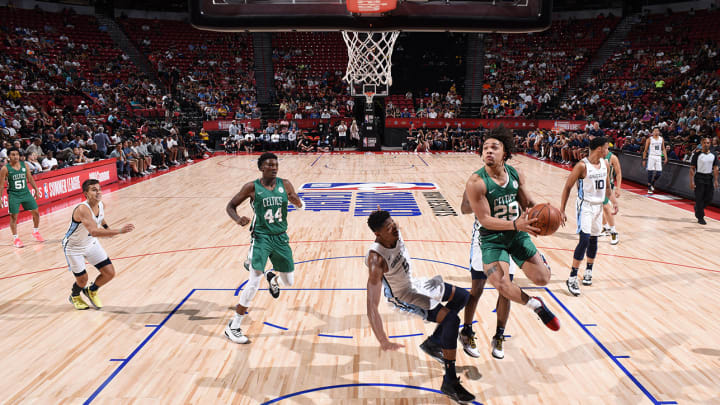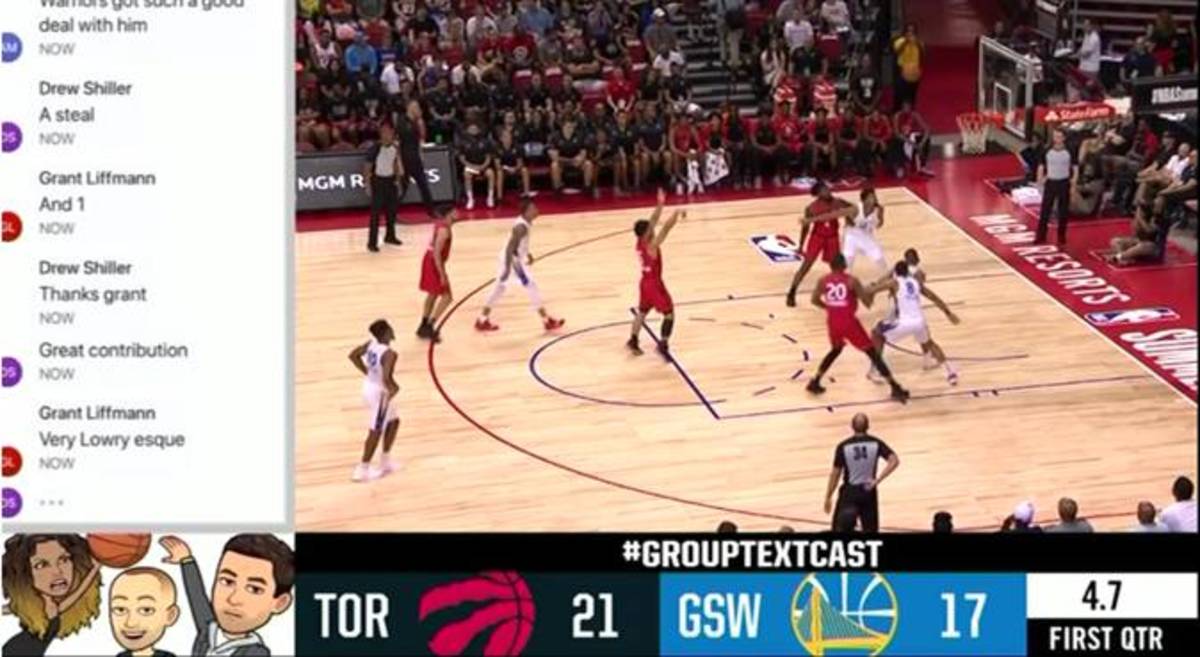The Future of NBA Broadcasts Is on Display During Summer League

Look out for the Spydercam. Players should be looking out too. Capable of coming down to floor height during dead ball situations, the Skycam-like suspended camera kit could be diving through numerous NBA arenas soon.
For now, it’s become a mainstay at Las Vegas’s Thomas & Mack Center, where the league, along with partners at ESPN and WarnerMedia, are experimenting with next-gen broadcasting possibilities.
NBA broadcasters haven't been able to use the skycam as much as their NFL peers—yet. Here's a look at what they're experimenting with at Summer League (Courtesy: NBA). pic.twitter.com/IPIOhm2cPp
— ✏️Jacob Feldman (@JacobFeldman4) July 12, 2019
“The tech has really arrived,” said Paul Benedict, the NBA associate VP for broadcasting content management. “Our hopes are that this is an element you see deployed in NBA games as soon as this season.” In recent years, the tech has only been rolled out in rare instances, such as the most recent All-Star weekend, as well as ESPN’s Finals broadcasts. Implementation difficulties plus concerns about smoothly capturing today’s fast-paced game have prevented the flexible viewpoint from becoming as common as it now is for NFL telecasts.
“The way in which we’ve watched basketball games really hasn’t changed in 50 years,” Benedict said. “We’re going to see significant progress in the next few years.” And if this year’s Summer League tests are any indication, those changes will be dramatic.
It’s typical for leagues and broadcasters to use exhibition games as testing grounds for new ideas, but the NBA still stands out for both the number of tests it ran this week—and the dedication afforded to them. There have been nine (nine!) different alternate broadcasts trotted out, involving everything from pop-up factoids to rap battles to a facsimile iMessage thread covering the left portion of one telecast.
The main focus this year, NBA executive VP for media operations and technology Steve Hellmuth said, was improving viewers’ access to the action. In year three of the NBA’s internal “optimal broadcast initiative,” that’s what executives decided to prioritize. Hence the Spydercam emphasis, though that’s only the start.
A 5G antenna was hung in-arena, for instance, allowing sideline reporters to deliver content directly from their smartphones. An entire game was shot that way Thursday. Monday, ESPN3 offered a “Courtside Experience” presentation of Wizards-Nets, using cameras positioned 10 rows up to simulate sitting in the high-priced sections. Another new camera setup, the SupraCam, taken from racing broadcasts, can run along the full length of the court while suspended.
“The best thing about all this is that there are no secrets,” ESPN senior NBA coordinating producer Tim Corrigan said. “Everybody is working together to see how we can get closer, be more dynamic and make things more memorable.” Joined by senior remote production operations specialist Eddie Okuno, Corrigan pondered possibilities before heading to Vegas and often ducked into the NBA’s own production trucks to see what they had created. While working to improve the traditional telecast, the execs have also kept an eye on entertaining its digitally minded fans. Once again, the Spydercam serves as an example.
“We have a generation of fans consuming our games in different ways,” Benedict said. “They see the traditional 2K angle with autoflip, and that’s something they want see watching games on broadcast.”
The NBA has also extended its testing with vertical presentations, which could roll out in the NBA mobile app. “Seventy-five percent of people using sports apps leave their phones vertical,” Hellmuth said. “Our thinking was, when you first start to watch a game, can we give you a fullscreen vertical view to get you interested.” It’s the type of look that Snapchat (and to a lesser degree, IGTV) has made popular, and something Netflix recently tackled with its previews project.
Saturday, the NBA attempted to merge first and second-screen experiences with a Group Textcast, which supplemented Doris Burke’s ESPN analysis with a three-person chat thread running along the left side of the screen.

Tuesday, Grizzlies analyst Brevin Knight and Suns analyst Eddie Johnson went head-to-head in a Dueling Homers broadcast marked by commentator challenges (Johnson came out ahead). To traditionalists, the idea of announcers racing to get an Oreo from their forehead into their mouth might come as a shock, but it could one day be commonplace.
“We look into the future and see traditional commercial breaks aren’t going to be traditional in however many years,” Benedict said. “We’ve always been on this quest to gamify a broadcast and add that second element to make it more dynamic.”
ESPN did its own commercial replacement experiment, bringing in Doug Kazerian and Preston Johnson to discuss the gambling aspects of Summer League during breaks in the action. “Can you now take that back and look at it with our sales groups and say, ‘Hey what about something like this?’” Corrigan said. “Who knows.”
There’s only one way to find out.
